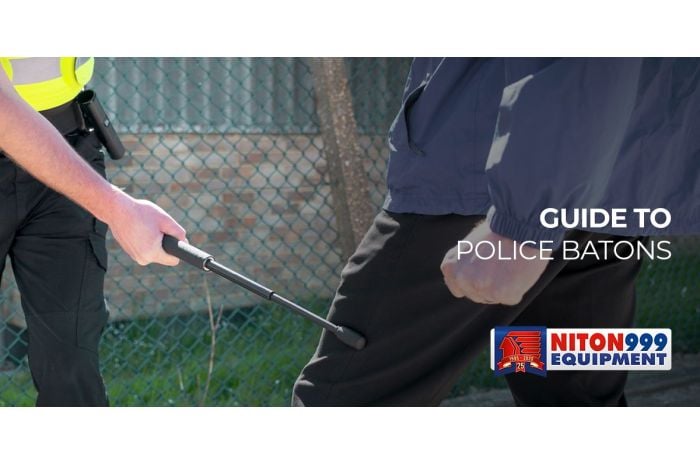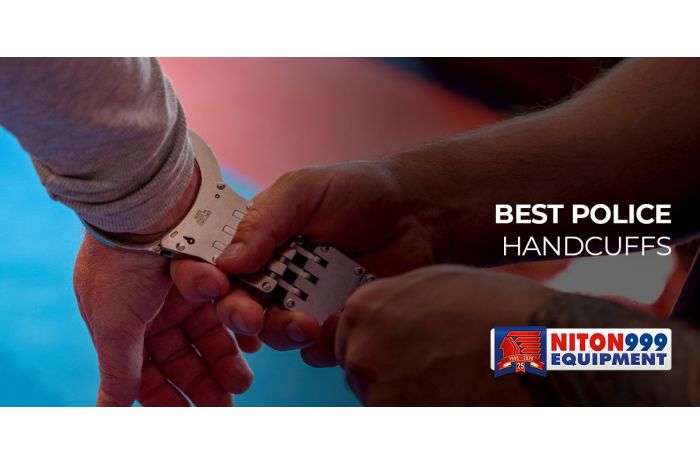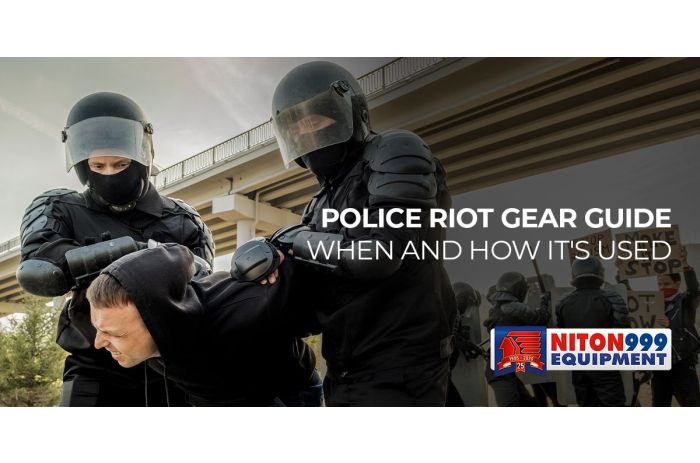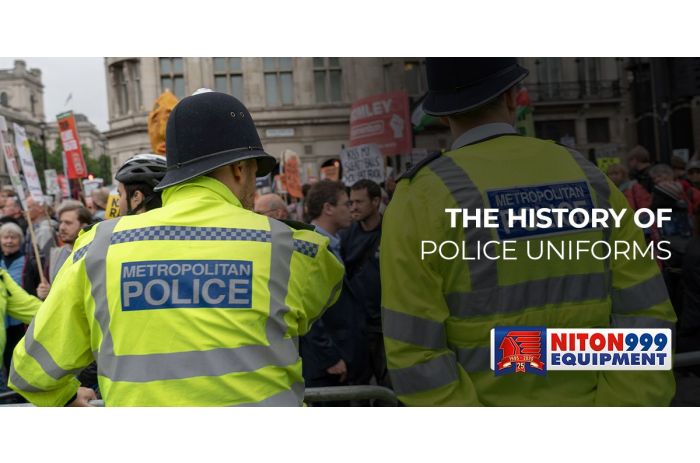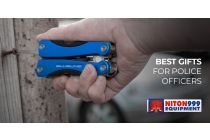The role of law enforcement is challenging, requiring a fine balance between maintaining public safety and respecting individual rights.
One tool that embodies this delicate equilibrium is the police baton. With a rich history and varied designs tailored to modern-day requirements, batons have been integral to police equipment worldwide.
This guide explores these indispensable law enforcement tools' evolution, usage, and legal implications.
History of the Police Baton
Origins and Early Use
The police baton, sometimes colloquially as a truncheon or nightstick, has a long history as a symbol of law enforcement. Its usage spans centuries and has been a critical component of police forces worldwide.
In the United Kingdom, the baton has been in the police officer's toolkit since the inception of the first organised police forces in the 19th century, such as Sir Robert Peel's Metropolitan Police Service established in 1829.
In these early days, batons were typically constructed from robust hardwoods like oak or hickory. Their basic design was akin to a heavy-duty stick, simple yet effective.
As a standard piece of equipment, every police officer on foot patrol would typically carry a baton.
Material and Design Evolution
As the nature of policing evolved to meet increasing risks, so did the design and material composition of the police baton.
The simple wooden stick of the past began to transform to increase its efficacy and adaptability in various situations.
More durable and lightweight materials, such as polycarbonate and aluminium, began to replace traditional hardwoods.
Innovation and Modernisation
The 20th century saw further significant innovations in baton design. Police batons evolved from sturdy sticks to more sophisticated and specialised law enforcement tools. The PR24 baton is another common example of a modern baton.
For instance, telescopic batons, often made from high-strength steel, could be extended and retracted as needed.
When collapsed, these batons were easy to carry and conceal. When extended, they provided officers with the same reach and impact as a traditional, full-length baton. This significantly improved the baton's versatility.
How Does a Police Baton Work?
In the UK, police are given specific training on when and how they can use force, including batons, during their duties. Under the Police and Criminal Evidence Act (PACE) 1984 and the Criminal Law Act 1967, police officers are allowed to use "reasonable force" if they believe it is necessary.
The use of batons is typically considered an escalated form of force. It should only be applied when less aggressive tactics (like communication and negotiation) have been ineffective or are inappropriate, given the threat level.
For instance, batons may be used to protect themselves or others from harm, to bring a dangerous situation under control, or to make a lawful arrest. This applies especially to dealing with violent individuals or those who pose a significant threat.
When a baton is used, officers are instructed to target large muscle groups (like the arms or legs) to reduce the risk of serious injury. Strikes to the head, neck, spine, or groin are considered lethal force due to the potential for severe harm. These are usually only used when the officer's or another person's life is in immediate danger.
However, any use of force by the police, including batons, must be justified and proportionate to the threat posed. If a police officer is judged to have used excessive force, they could be subject to disciplinary proceedings or criminal charges.
Primary Function
At the most fundamental level, a police baton is designed to serve as an impact weapon. This non-lethal tool enables law enforcement officers to subdue individuals who may be aggressive or violent without resorting to lethal force.
The baton is an extension of an officer's arm, amplifying the force they can deliver and serving as a buffer to protect them from direct physical contact with a potentially dangerous individual.
Additionally, batons are used defensively by blocking attacks from a perpetrator, allowing officers to gain control of a potentially dangerous situation.
In addition to its use in self-defence, the baton serves a practical role. It can be used as a window-breaking tool in rescue situations, such as retrieving individuals from locked vehicles.
Mechanics of Baton Usage
When a police officer swings a baton, the baton’s weight, combined with the speed of the swing, generates a considerable amount of force.
This force is concentrated in a small area – the baton's tip. This allows the officer to deliver powerful blows that can temporarily incapacitate an individual by targeting specific pressure points or areas on the body, like the limbs, without causing fatal harm.
Versatility of Baton
The versatility of a baton goes beyond its use as a striking tool. It can also function as a jabbing instrument, helping to maintain a safe distance between the officer and an individual.
The baton can deflect attacks or apply various control and restraint techniques, making it versatile in diverse policing situations.
Expandable Baton Design
The modern expandable baton is a technological advancement over traditional fixed-length batons. It's portable, easy to carry, and conveniently concealed in a compact state.
But when required, it can be extended to full length swiftly and easily, providing a practical and efficient tool for law enforcement officers.
The expanding feature also offers a psychological advantage, as the sudden increase in size can deter potential aggressors.
Is it Legal to Carry a Baton in the UK?
Offensive Weapons Act of 1996
The legality of carrying a baton in the UK is governed by the Offensive Weapons Act of 1996.
According to this legislation, it's generally illegal for a civilian to carry a baton in public. The law views batons as offensive weapons due to their potential misuse.
Exemptions for Law Enforcement
Police officers are the primary exception to this rule. They're authorised to carry batons as a standard part of their equipment. This only applies on duty and when working in the capacity of a police officer.
Law enforcement officers also receive comprehensive training on their safe and effective use.
This training includes learning how to control the baton, where to strike an individual to minimise permanent injury, and when to use a baton in the line of duty.
Consequences of Unlawful Baton Possession
Civilians possessing a baton without a valid reason can face serious legal consequences.
These can range from fines to imprisonment. The severity of the punishment often depends on the circumstances surrounding the possession and any resulting harm.
Ethics and Training
While batons are a valuable tool for law enforcement, they must be used with a high degree of responsibility and ethical judgement. Improper use can lead to severe injuries and potential legal and professional consequences for the officer.
Consequently, proper training in baton use is essential to ensure officers understand and respect the tool's power and potential for harm and to ensure its use aligns with laws, regulations, and human rights.
Summary: The Comprehensive Guide to Police Batons: Types, Usage, and Legal Considerations
From its humble beginnings as a simple wooden stick to the versatile and sophisticated tool it is today, the baton has evolved to meet the ever-changing needs of policing.
Understanding how and when a baton is used and the legal considerations surrounding it is fundamental to appreciating the complexity of law enforcement work.
Remember, the baton isn't merely a weapon but a symbol of a police officer's duty to protect and serve, a testament to their commitment to maintaining peace while respecting the rights and dignity of all individuals.
Niton999 stocks a wide range of batons for police and security. Check out our range of batons here.
Police Baton FAQ
When can police use batons?
The usage of batons by police is governed by regulations and training procedures specific to each jurisdiction.
However, generally, the use of a baton is seen as an escalation in force and is typically allowed when non-physical tactics (like verbal de-escalation) have failed or when the officer or another person is in imminent physical danger.
Police are trained to aim for large muscle groups and avoid sensitive areas to minimise harm while subduing the subject.
Is a police baton an offensive weapon?
In many jurisdictions, including the UK, a police baton is not considered an offensive weapon when carried by law enforcement officers in their duties, as they're trained and authorised to use it.
However, a baton is often considered an offensive weapon for a civilian. Unauthorised possession or use of a baton can result in legal penalties, including fines and imprisonment.
Can UK security guards use batons?
In the UK, it is generally illegal for security guards to carry batons unless they have been explicitly authorised to do so and have received proper training.
This authorisation is usually limited to certain roles within the private security industry with a demonstrable need for equipment such as cash and valuables in transit roles.
It's also essential to note that batons should be a last resort, used only when necessary and proportionate to the threat faced.

